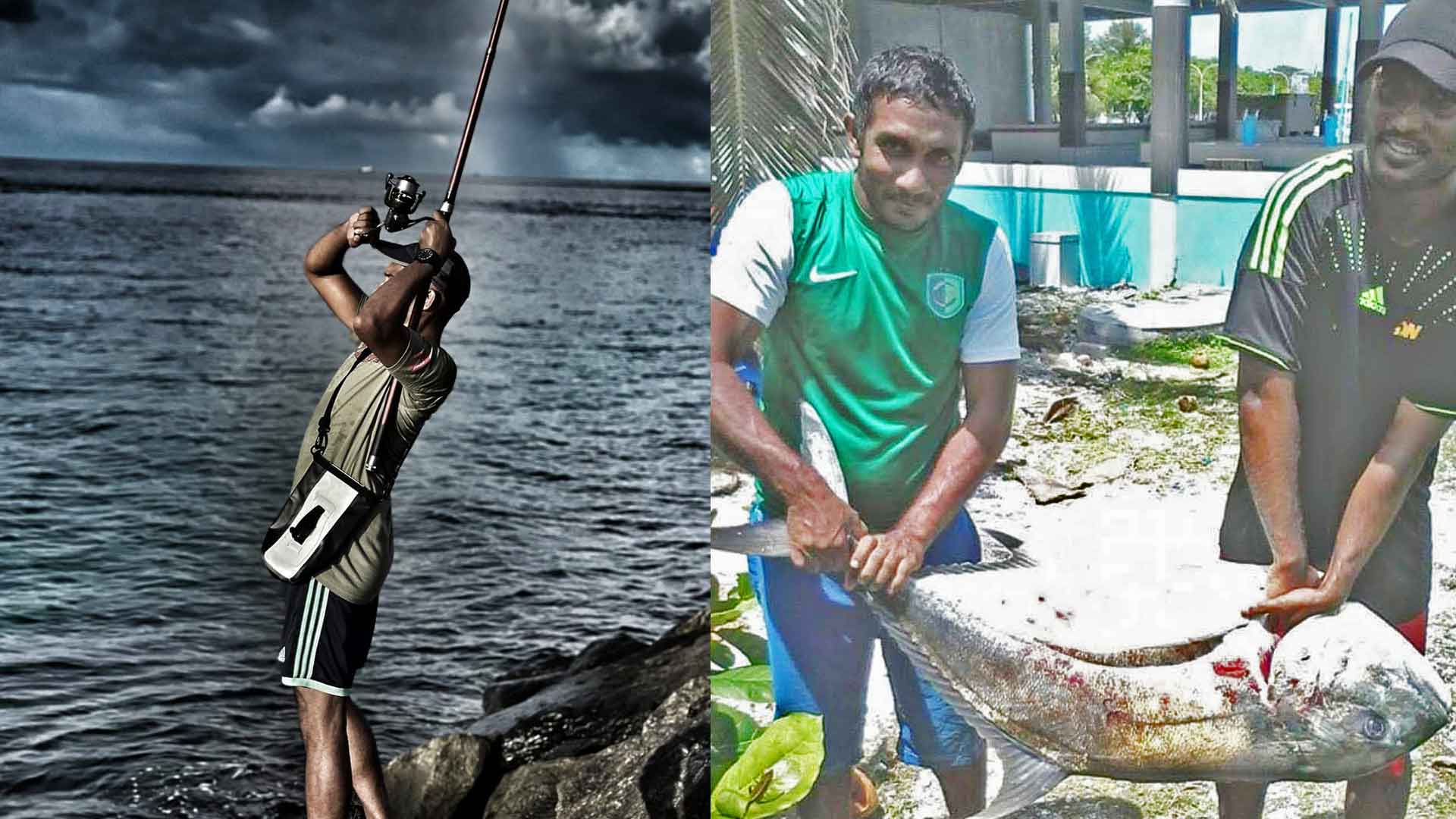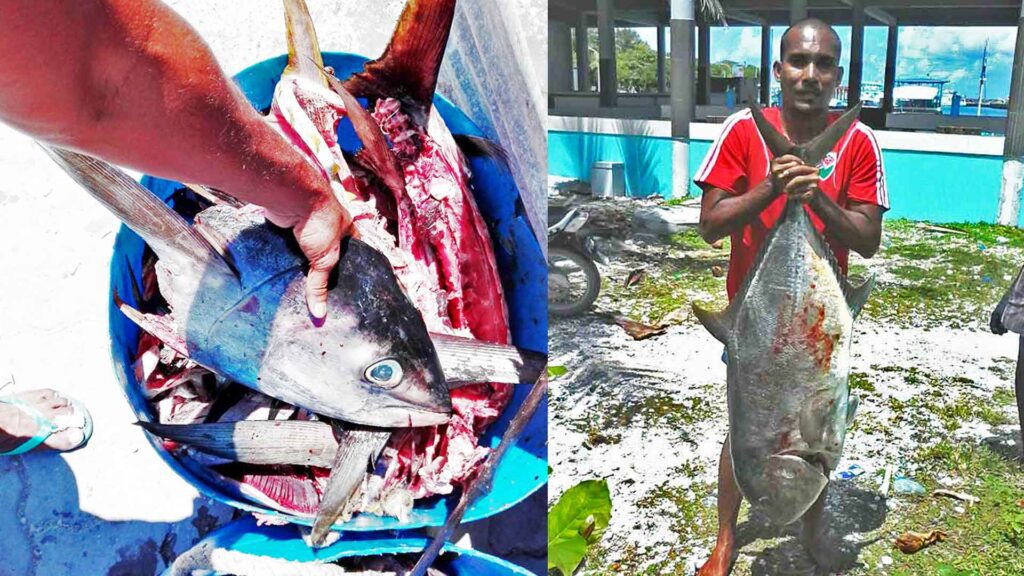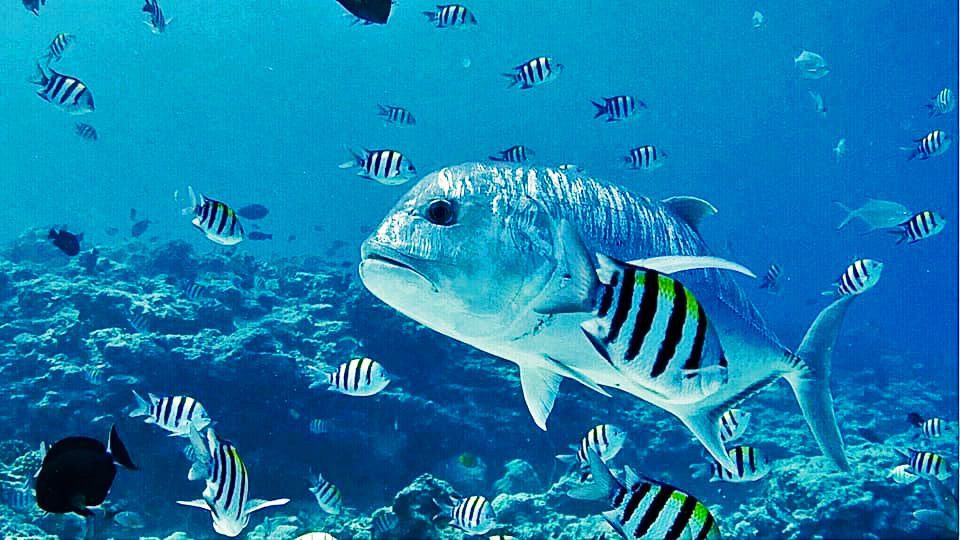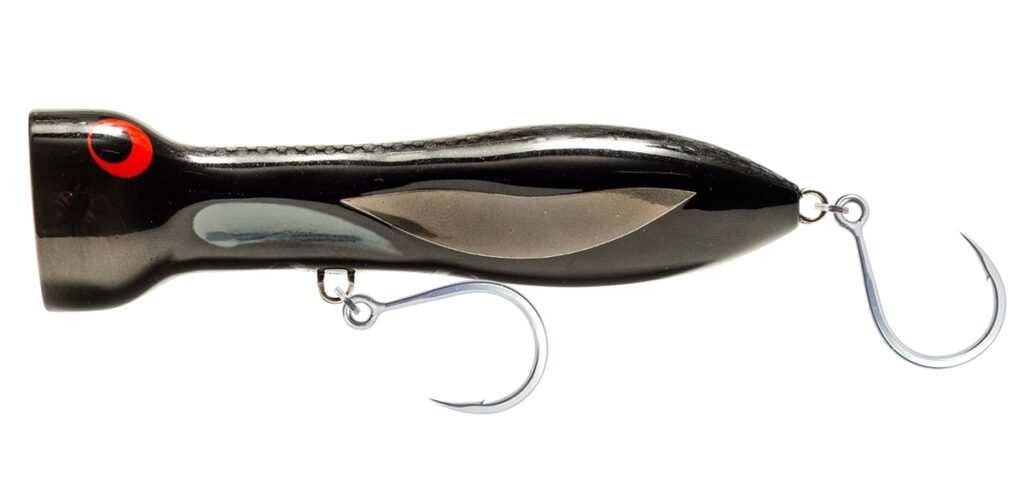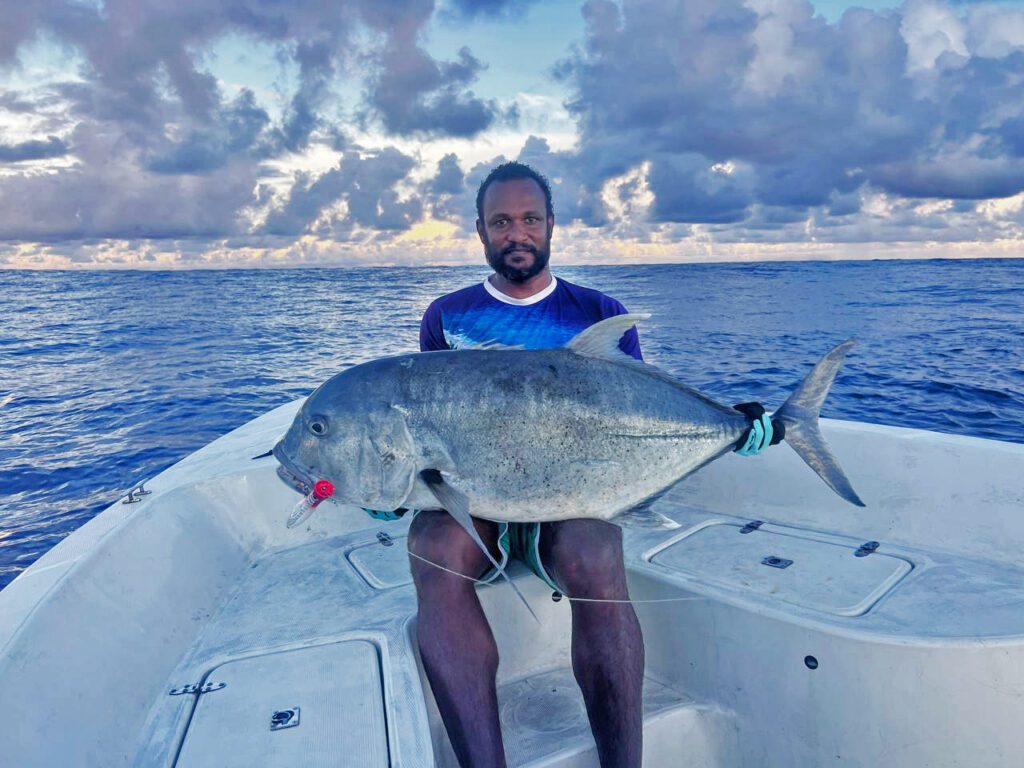
If we want to find giant trevally on our island, Fuvahmulah, we usually go to the beach during high tide. One of the most popular places for GTs on our island is the southern end of the island, where there are long reef pathways that lead to the reef edge that connects to the open sea.
We would go to the shores of this area to catch giant trevally. On the shore, especially on the reef flat before high tide, we would set up fishing lines.
GTs attack their prey through ambush and surprise. Coral reef habitats are primarily home to GTs. Predators can hide or dash into prey due to the various patterns and formations that make up coral reefs. These formations provide excellent cover.
While beach fishing on Male’s southwestern beach, I observed that they stay near the drop-off, waiting and searching for their prey. In this area, we typically cast the lure at a distance of about 150 feet. The lure will therefore land past the drop-off.
These are areas where the sea floor or reef edge drops sharply. When we reel in most of the GT, they ambush our lures near the area’s drop-off. As a result, they consistently favour locations with coral reefs that have this unique characteristic.
You can also find them in channels. GTs are particularly active between islands or where currents flow. These predators are drawn to passages like this because of the concentration of bait fish in the area.
Bait fish are also drawn to places such as these where they can feed. There are also artificial structures where GT can be found, like shipwrecks.
Lagoons and reef flats in the Maldives are common places to catch GTs. Bait fish, such as bigeye scad (Mushimas), are prevalent in many Maldives lagoons. These are hotspots where GTs aggressively pursue their prey.
This is among the most exciting fishing experiences that Maldivians, including women and children, have had. You’ll be able to land these brutes using everything from simple handline fishing to modern fishing reels.
You can also explore areas with rocky features. Water disturbances in these areas make for ideal GT fishing conditions.
GT thrives on islands or reefs with prominent edges. These are rocky outcrops at the edge of islands or reef systems.
In Fuvahmula, we used to go to the reef edge, which has prominent areas like this. During the southwest monsoon, when flying fish are abundant near the shore, we land huge GTs with dead flying fish as bait.
GTs can be found in these hotspots, but other factors like tidal activity and prey presence also matter. However, experienced fishermen believe that early morning and late afternoon are ideal times to fish for GTs because these times of day provide the best conditions for the presence of baitfish.
